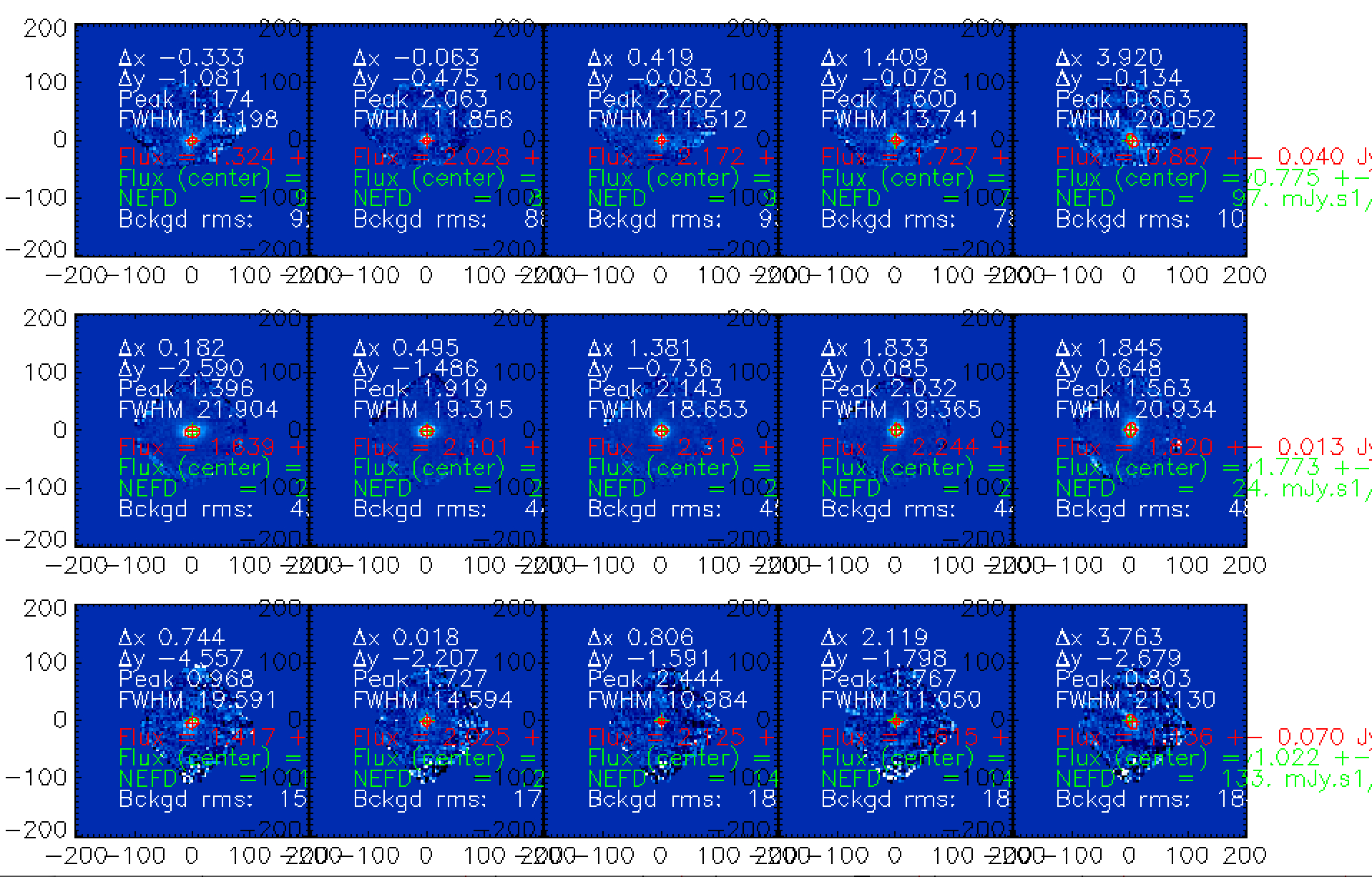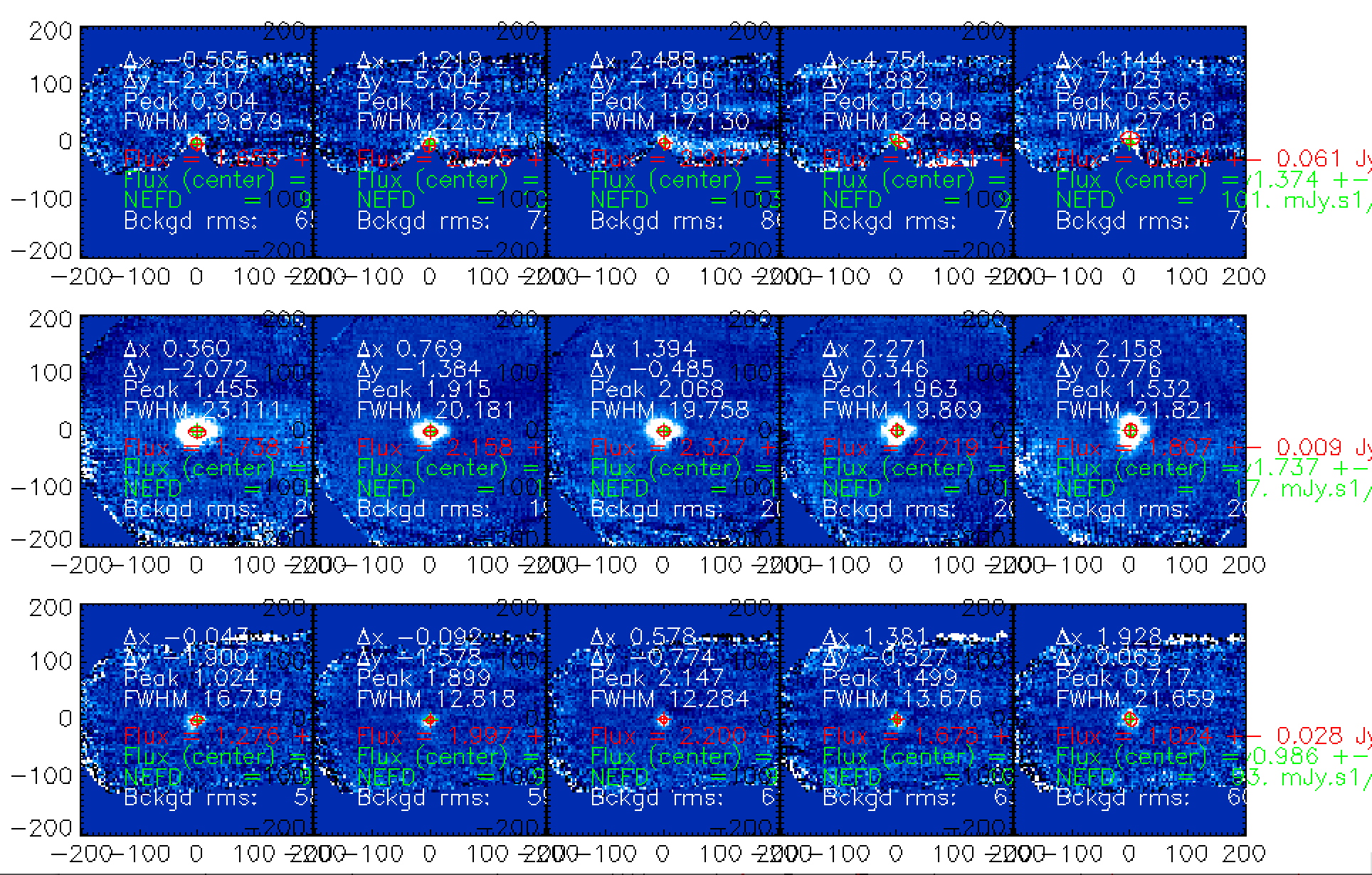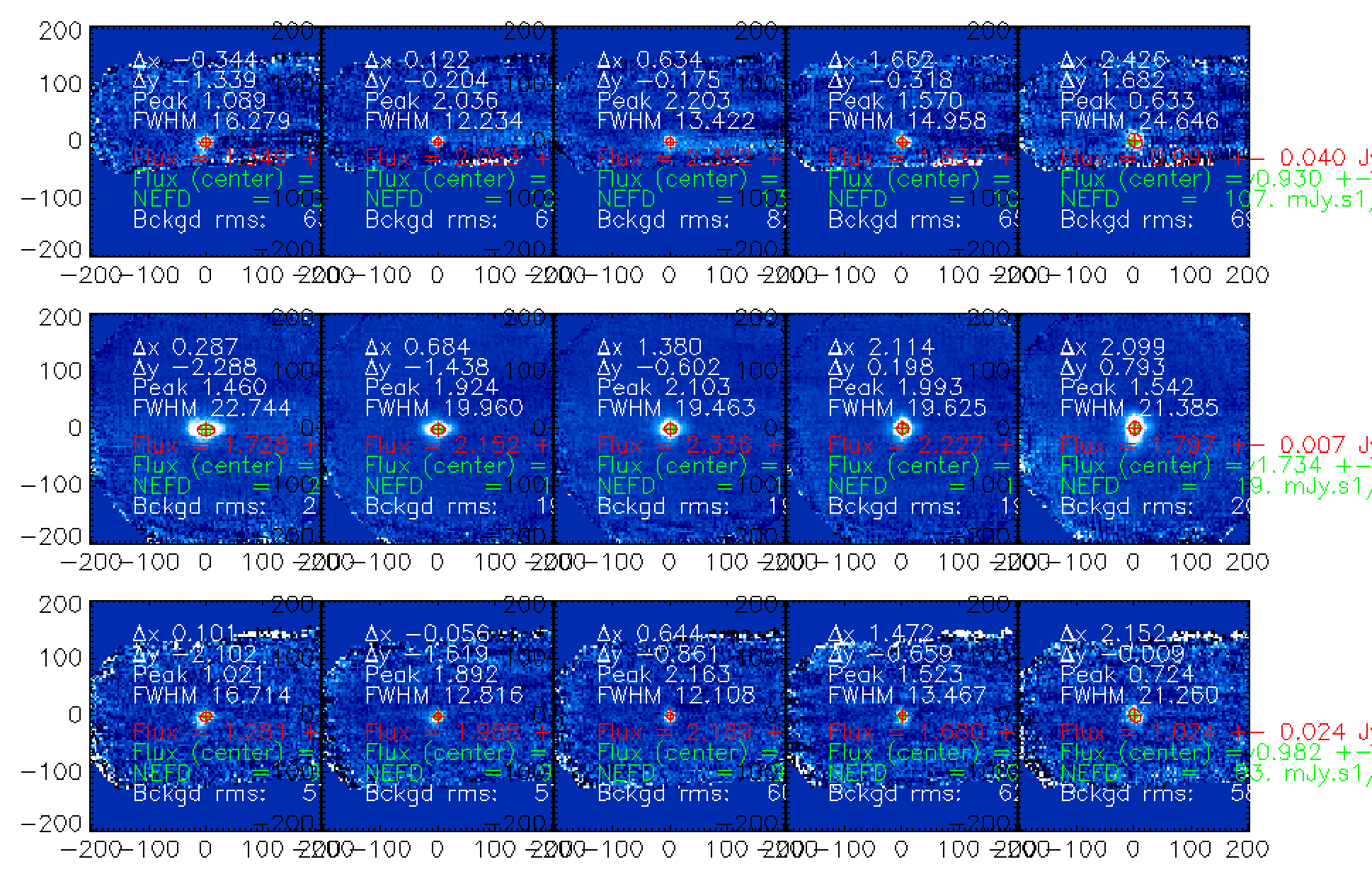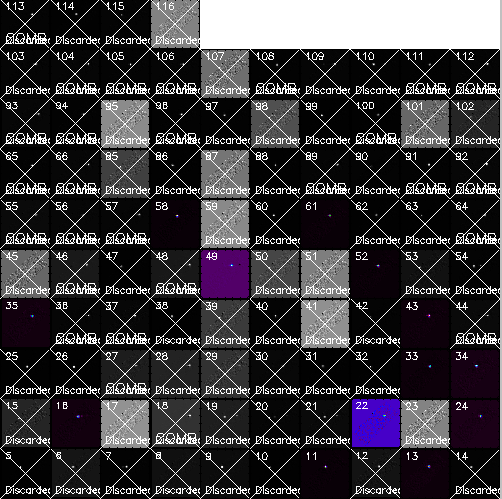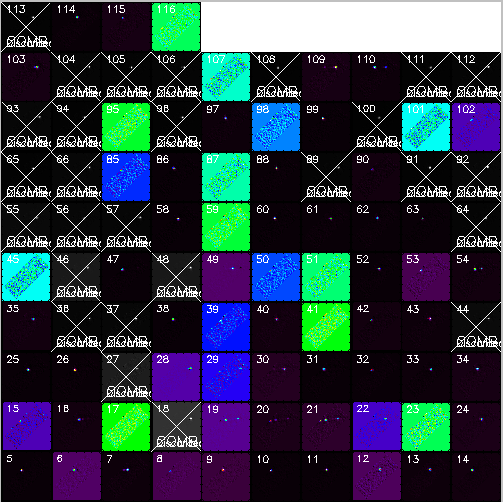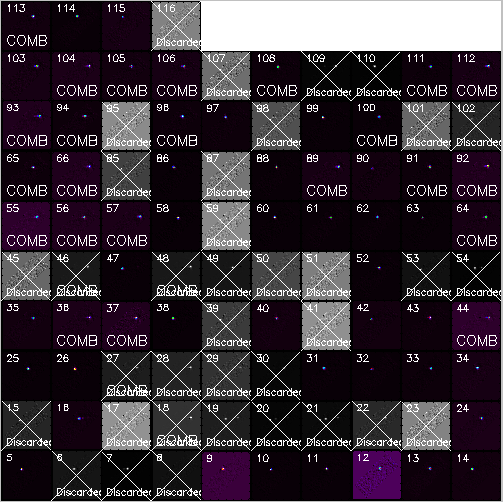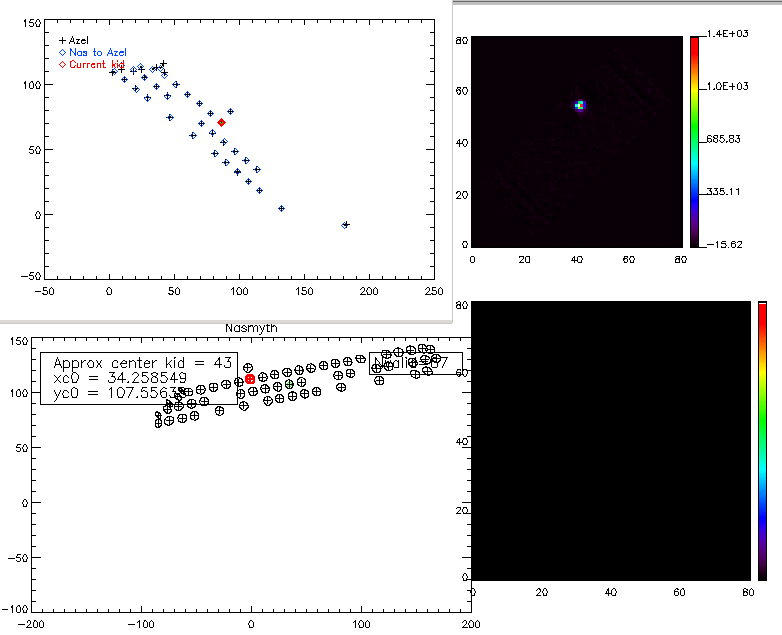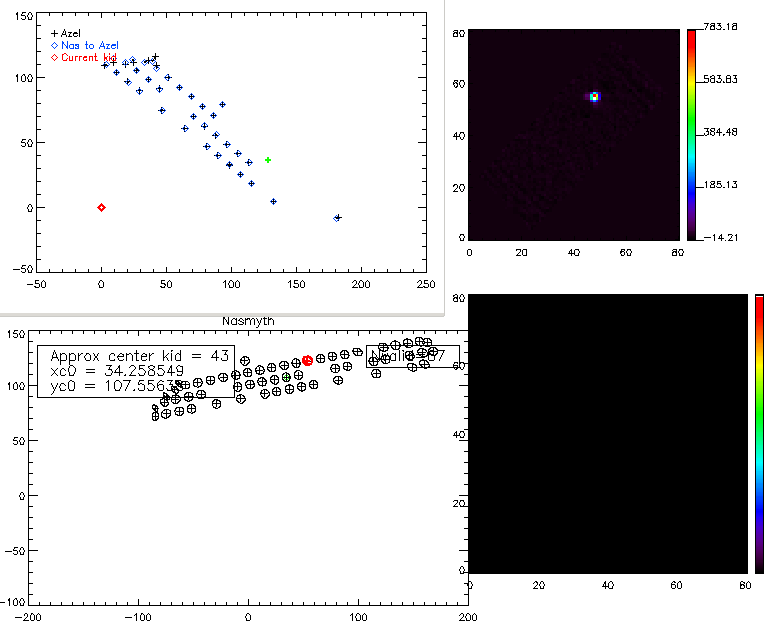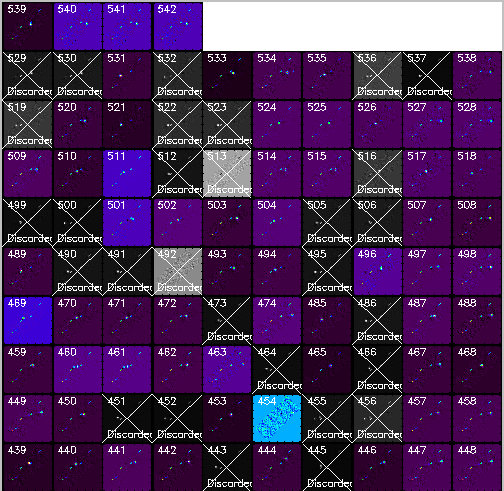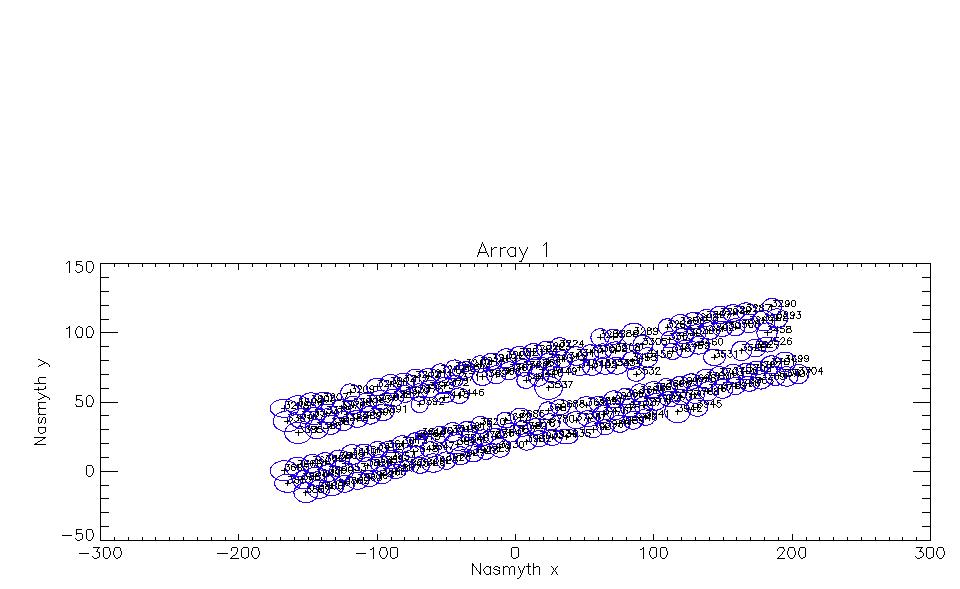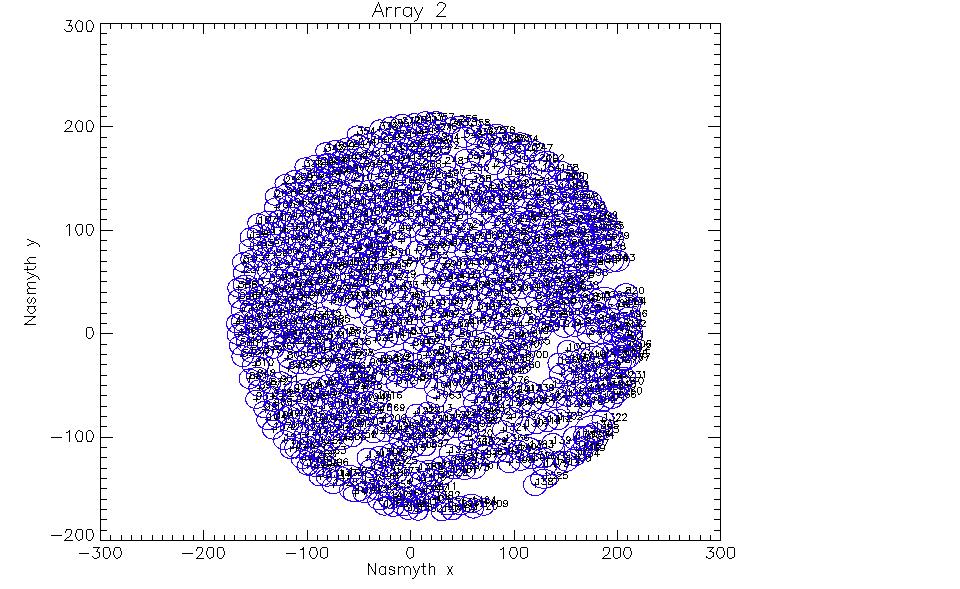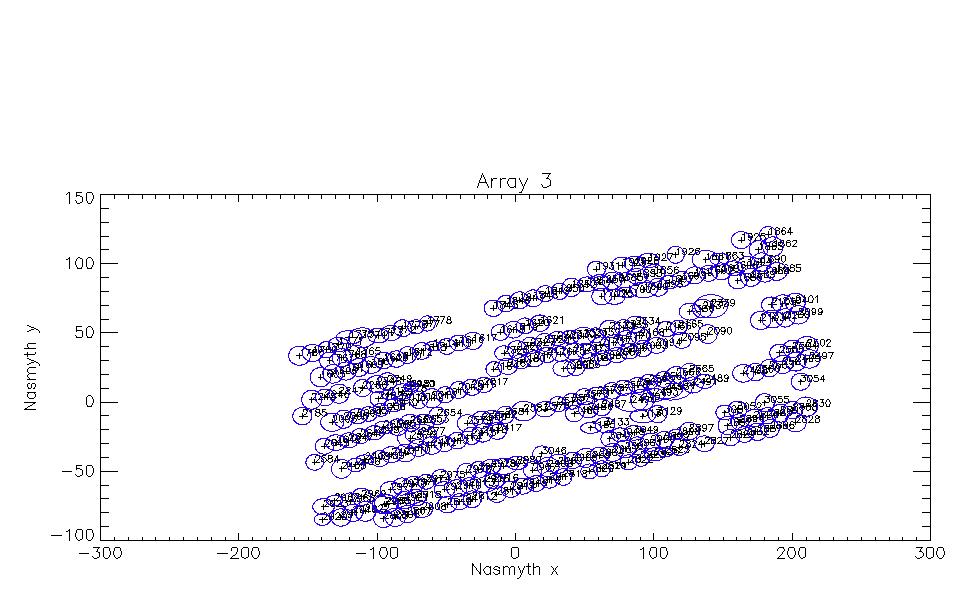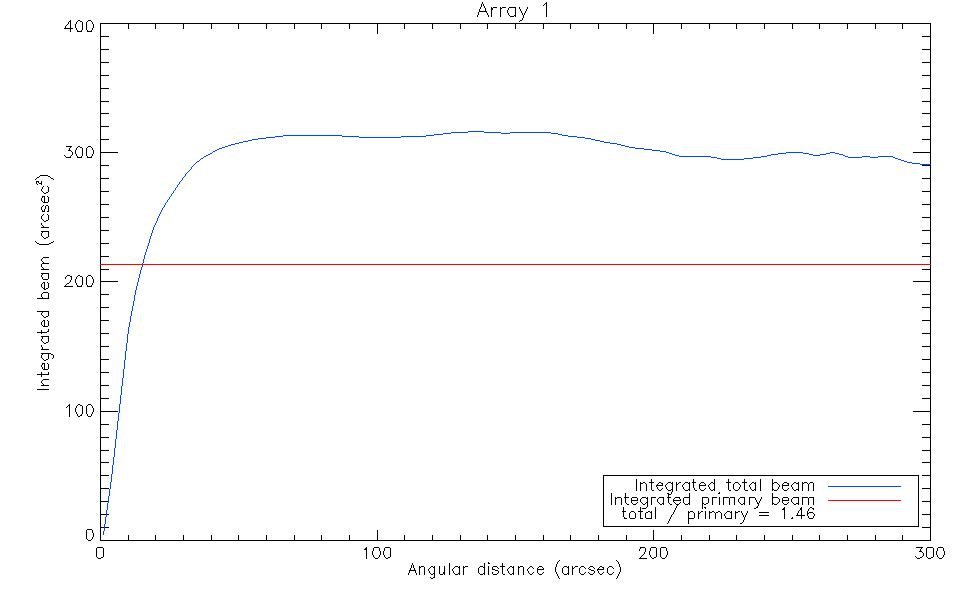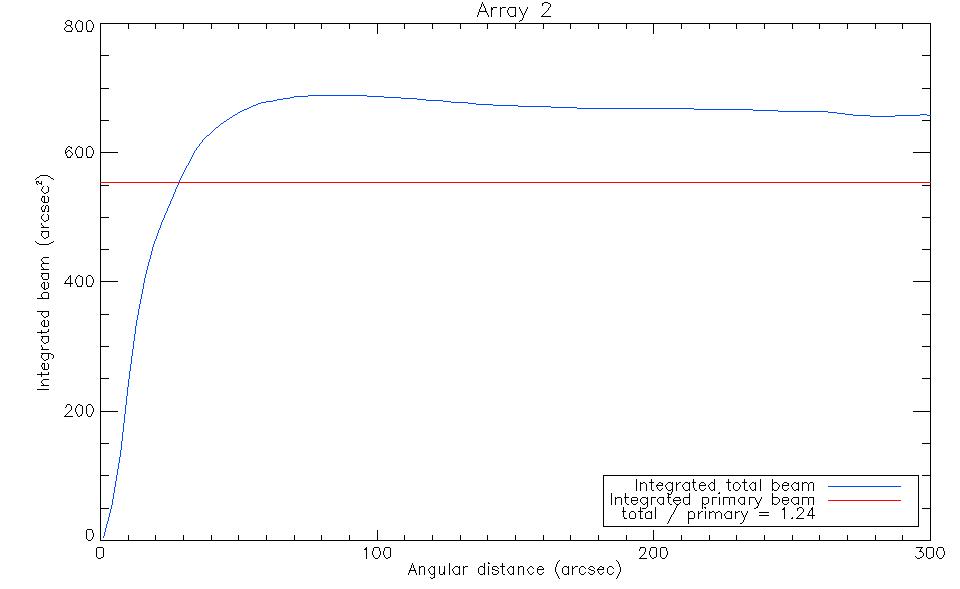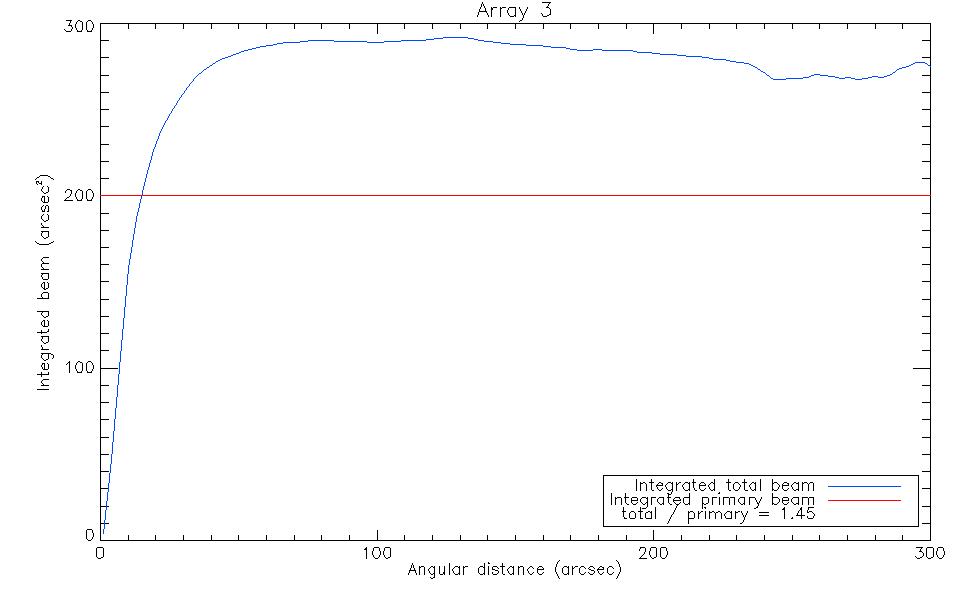|
Size: 11795
Comment:
|
Size: 11797
Comment:
|
| Deletions are marked like this. | Additions are marked like this. |
| Line 7: | Line 7: |
| * We have continued the integration on the DeepField1 and on the faint source PSS2322+1944 (we do not detect it yet, but we think that this is due to the problems we see in the decorrelation and to the presence of residual bad KIDs in the current geometry). We have also continued on other sources already observed during the run, varying a little the scanning strategy, to test different step sizes and scan speeds. | * We have continued the integration on the !DeepField1 and on the faint source PSS2322+1944 (we do not detect it yet, but we think that this is due to the problems we see in the decorrelation and to the presence of residual bad KIDs in the current geometry). We have also continued on other sources already observed during the run, varying a little the scanning strategy, to test different step sizes and scan speeds. |
| Line 13: | Line 13: |
| * We have observed a faint source (~4mJy), PSS2322+1944. Reducing the scans we have noticed some problems in the decorrelation. FR has done some tests, by using only the kids at the center of the matrix (NIKA1 like) and is working on a method for a common mode per block of correlated KIDs. We have continued the integration also on the cluster of galaxies PSZ1G155 and the DeepField1 for sensitivity and noise verification. | * We have observed a faint source (~4mJy), PSS2322+1944. Reducing the scans we have noticed some problems in the decorrelation. FR has done some tests, by using only the kids at the center of the matrix (NIKA1 like) and is working on a method for a common mode per block of correlated KIDs. We have continued the integration also on the cluster of galaxies PSZ1G155 and the !DeepField1 for sensitivity and noise verification. |
Back to the NIKA2 run 2 main page
Contents
November 2015, 30 (Monday) - December 2015, 1 (Tuesday)
- The weather has been less good than yesterday.
We have continued the integration on the DeepField1 and on the faint source PSS2322+1944 (we do not detect it yet, but we think that this is due to the problems we see in the decorrelation and to the presence of residual bad KIDs in the current geometry). We have also continued on other sources already observed during the run, varying a little the scanning strategy, to test different step sizes and scan speeds.
November 2015, 29 (Sunday)
The weather was good, very good during the night (nearly mm weather, tau < 0.1).
- We have done some tests on the impact of the cryostat inclination on the maps (scans 232 - 236).
We have observed a faint source (~4mJy), PSS2322+1944. Reducing the scans we have noticed some problems in the decorrelation. FR has done some tests, by using only the kids at the center of the matrix (NIKA1 like) and is working on a method for a common mode per block of correlated KIDs. We have continued the integration also on the cluster of galaxies PSZ1G155 and the DeepField1 for sensitivity and noise verification.
November 2015, 28 (Saturday)
The weather was not great at the begining of the observations, tau between 0.3 and 0.4 and very turbulent atmosphere. After a while the weather improved significantly, nearly mm weather ( tau < 0.1).
- We worked with Martino on the interface of the cryostat to correct fake alarm on inclination of the cryostat. We also planed for doing some tests on the impact of the cryostat inclination on the maps. Unfortunately the weather was not good and we had troubles for focusing (see below)
- With the bad turbulating weather we found out that we had a lot of troubles with the pointliss data reduction. We found extremely bad maps. After some tests we realise that there is some funny going on the data reduction. We analyse on the subscan of the focusliss with the pointliss pipeline and found a very nice maps, indicating that there is no problem with the data themselves. We are investigating what it is the problem - no solved yet.
- At the begining of the night we concentrated on beam maps and skydips. When the weather improved we decided to test some of the scientific projects and investigate the noise in the maps. For this we observed a cluster (PSZ1G155), deepfield1 and APM08279. The source Samuel proposed was unfortunately at too low elevation in the allocated observation slots.
- In the data analysis side we concentrated on understanding the focusliss problem.
- We corrected (hopefully) the problem in the python function used to construct the IMBFITS files so that we can now have the two millimeter arrays.
November 2015, 27 (Friday)
- The weather was not great about 0.3 to 0.4 opacity for most of the observation time. We had a bit of wind but could keep observing
- The instruments behave quite well. We just only had a crash of the acquisition software:
- request status packet timeout error at .... Qt has caught an exception
- We concentrated on beammaps, skydips and reltively faint sources (CXTau, FTTau, DRTau,APM08279)
- We notice an extra line in the TOI power spectrum at low frequency (see figure). This coincide with the switch on of the EMIR - we are not sure the two events are really related. Need to investigate further [Please check with Santiago. He may allow to switch-off the EMIR cold head for one or two scans. (CK, 28-Nov)]

We have also tested the capabilities of observing large regions on the sky. We did large 20'x20'OTF maps of NGC1068 and 15'x15' of DeepField1
- We have investigated the differences of beams for pixels in the center and in the external area of the matrix, for both pointing (left) and focus (right) scans. Despite they are all lissajous scans, we see different effects when selecting only KIDs at the center and viceversa.
- Only with KIDs at the center
|
|
- Only with KIDs at the border
|
|
- All the KIDs
|
|
- We have worked on the reduction of geometries and we have found various issues (see figures below for the reduction of the 20151127s348_349_350 beam map):
--> The new procedure which gives us the geometry from a set of beam map scans (make_geometry.pro) now makes a first kid selection before the actual kid_selection program (widget with the different map per KID to select). This first kid selection allow one to get a first geometry without spending a lot of time clicking on the small maps when running the kid_selection program. However, it seems there are some yet unidentified bugs in the program which does this first selection. As you can see on the top-left figure showing a subset of Uranus maps before starting the KID selection, a lot of good KIDs have been wrongly discarded.
--> We therefore need to reset all the selection to start over from scratch. As you can see on the top-center figure the reset_all button does not work properly and the COMB KIDs (kidpar.type = 3) are not recovered. We therefore need to use the recently added "Recover" button to get back all the KIDs of the considered subsample.
--> After having recovered the good KIDs which had been discarded and having discarded the KIDs we do not want to use, we end up with the top-right figure. As you can see, the number of KIDs we want to consider is significantly higher than the one we get if we do not use the kid_selection program.
--> In order to check the selection we click on the QVNasm button to see if the positions of the KIDs in the AzEl plane correspond to the ones we expect from the Nasmyth to AzEl rotation. The bottom-left figure shows the result we get when we consider a good KID. If you look at the map in the top right hand corner, the beam shape is rather good and if you look at the graph in the top left hand corner the position of the selected KID in the AzEl plane (black cross) match the one we expect (blue square).
--> However, when we click on what we think are the restored COMB KIDs, we get the bottom-center figure. Although the beam shape seems good, you can see on top left hand corner graph that the position of the KID in the AzEl plane does not match the expected position at all. Furthermore, these KIDs appear in the Nasmyth plane but there is no black cross in the AzEl plane.
--> We also noticed some KID subsamples where almost all the maps show "glitches".
|
|
|
|
|
|
* We have also computed using the current best geometry and the NIKA2 bandpasses, unit conversion coefficients
Array 1 (1mm)
Effective frequency on Uranus: 257.44978
K_RJ per K_CMB: 0.227352
K_CMB per y unit: 1.59773
MJy/sr per K_RJ: 2045.84
MJy/sr per y unit: 743.143
Jy/Beam per y unit: 4.09026
Array 2 (2mm)
Effective frequency on Uranus: 150.15966
K_RJ per K_CMB: 0.574303
K_CMB per y unit: -2.60872
MJy/sr per K_RJ: 697.353
MJy/sr per y unit: -1044.77
Jy/Beam per y unit: -15.7706
Array 3 (1mm)
Effective frequency on Uranus: 260.31896
K_RJ per K_CMB: 0.220832
K_CMB per y unit: 1.72039
MJy/sr per K_RJ: 2093.00
MJy/sr per y unit: 795.165
Jy/Beam per y unit: 3.97662
November 2015, 26 (Thursday)
- The weather was not great at the begining of the night tau=0.4 but improved later on reaching about tau=0.2. The wind was pretty strong and we had a largely fluctuating atmosphere.
- We did some testing work on ncs to understand the problem we had yesterday when the telescope could not track some sources when using focusliss. After some scans it seemed clear that the problem is that there was not track in between two focusliss in two different sources. The recommendation is to do a track when we switch sources - this is what we normally so it should not bea problem. [Comment by CK (27-Nov): It is good that you have a work-around. However, the problem should not happen and indicates that the rather new focusliss scans are not fully debugged. Walter is currently investigating this problem and may come back with improved software soon.]
- We did beammaps on Uranus and skydips in order to ensure redundancy - need to work on the data now
- We did observations on relatively faint sources to extrack rms noise - need to finalize the work on calibration to make this possible
Telescope starts oscillating wildly in Azimuth for few of the focusliss scans, as reported by operators. See the dedicated wiki. Gabriel is investigating in detail. Hans suggests to change testwise observing parameters. Operators have received instructions. (CK, 27-Nov)
Beam shapes of the arrays 1 & 3 (the soft. to read the NIKA raw did not distinguish btw. the ar1 & 3; this has to be fixed by the NIKA team). Maps 20151126s112-114 are drawn in red, green and blue. The edge pixels show clearly elongated beams. This needs a deeper analysis, i.e. further data. (RZ, Nov 27)
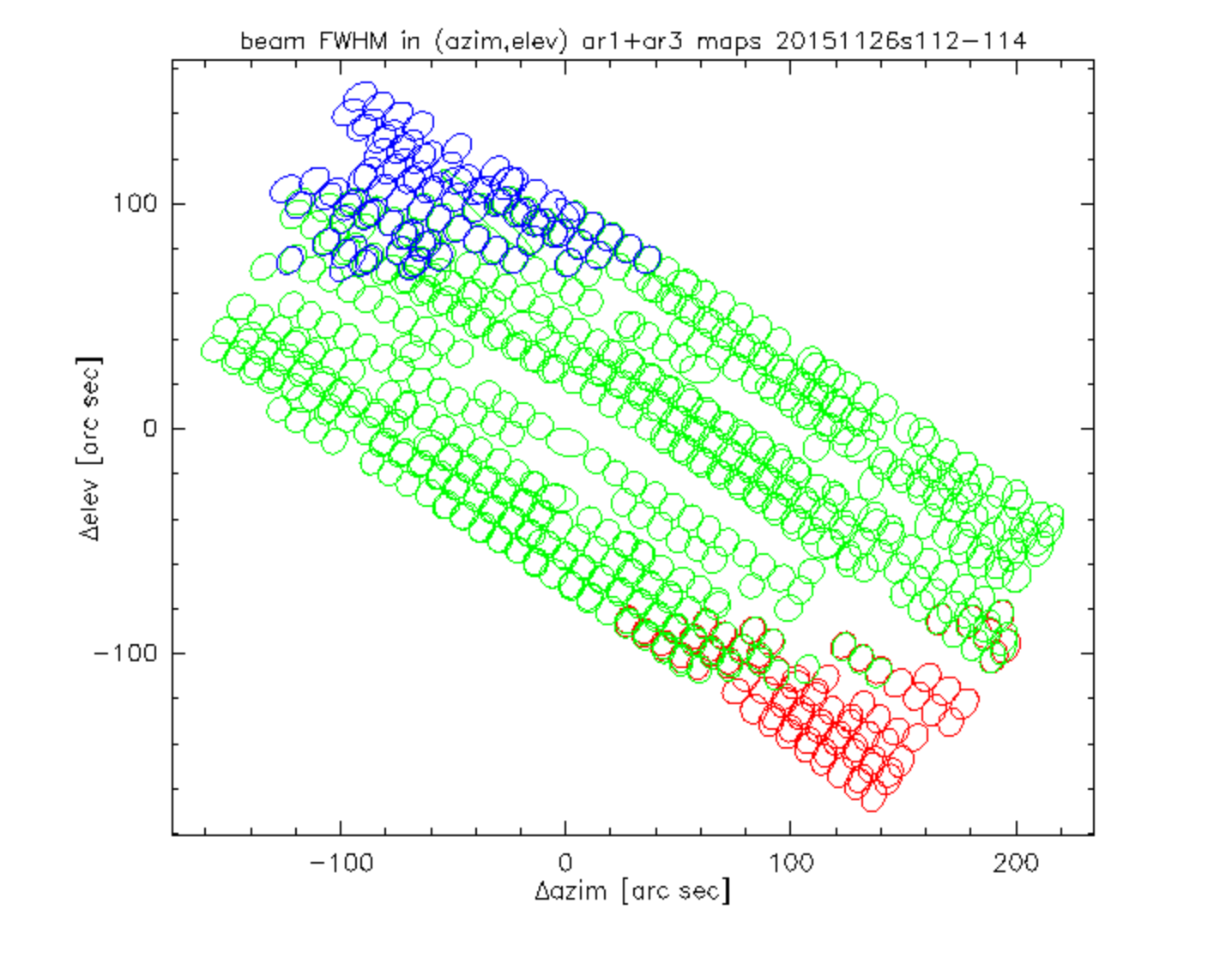
A new version of read_nika_data.py has been produced to check on this.
November 2015, 25 (Wednesday)
Good weather (opacity of ~0.1) but still a lot of wind --> No observations
- We reduced beam maps and updated geometries (skydip coefficients and kid selection)
- We made an analysis on the Uranus beammap (20151124s171) to characterize the beam.
--> total beam profile and primary beam gaussian fit.
--> integrated total beam and primary beam to compute the secondary beam fraction.
Unfortunately this map was made quite out of focus in y,z, i.e. the derived numbers are representative only for out of focus data (RZ, Nov 26)
|
|
|
|
|
|
|
|
|
November 2015, 24 (Tuesday)
- NIKA2 is cold again. Arrival at the telescope of AB, JMP, BC, FR.
- Installation of the new AMC card. New settings from Olivier to allow booting of 8 cards on CRATE 3, afterall we dichted one card because of sync problems
- Some trouble to find the first resonances, but wizard Alain came and saved the day
- Some nice skydips tau~0.3, but nice fit
- First geometry on the sky, without a proper refkid at 1mm we can not use the cross for pointing and focus, so back to lissajous
- First focus on 3C84, followed by geometry
- Quick picture on the geometry:



